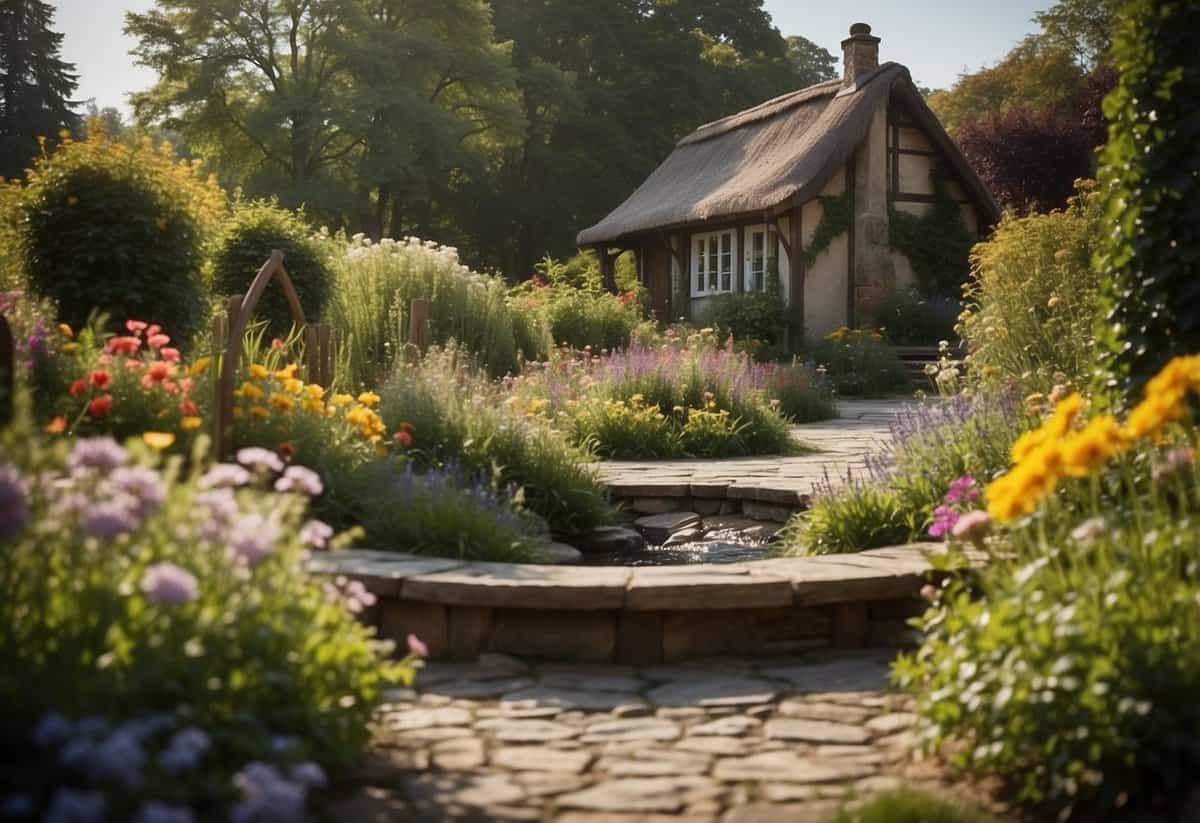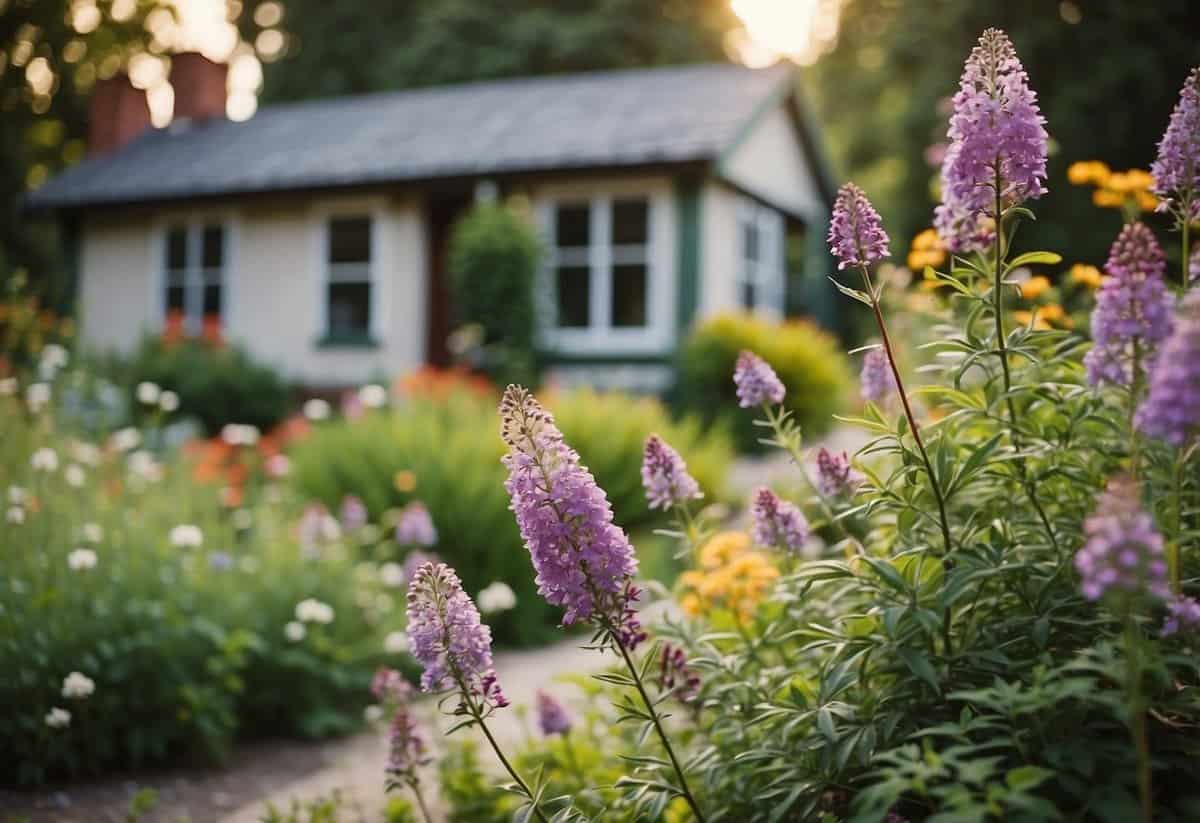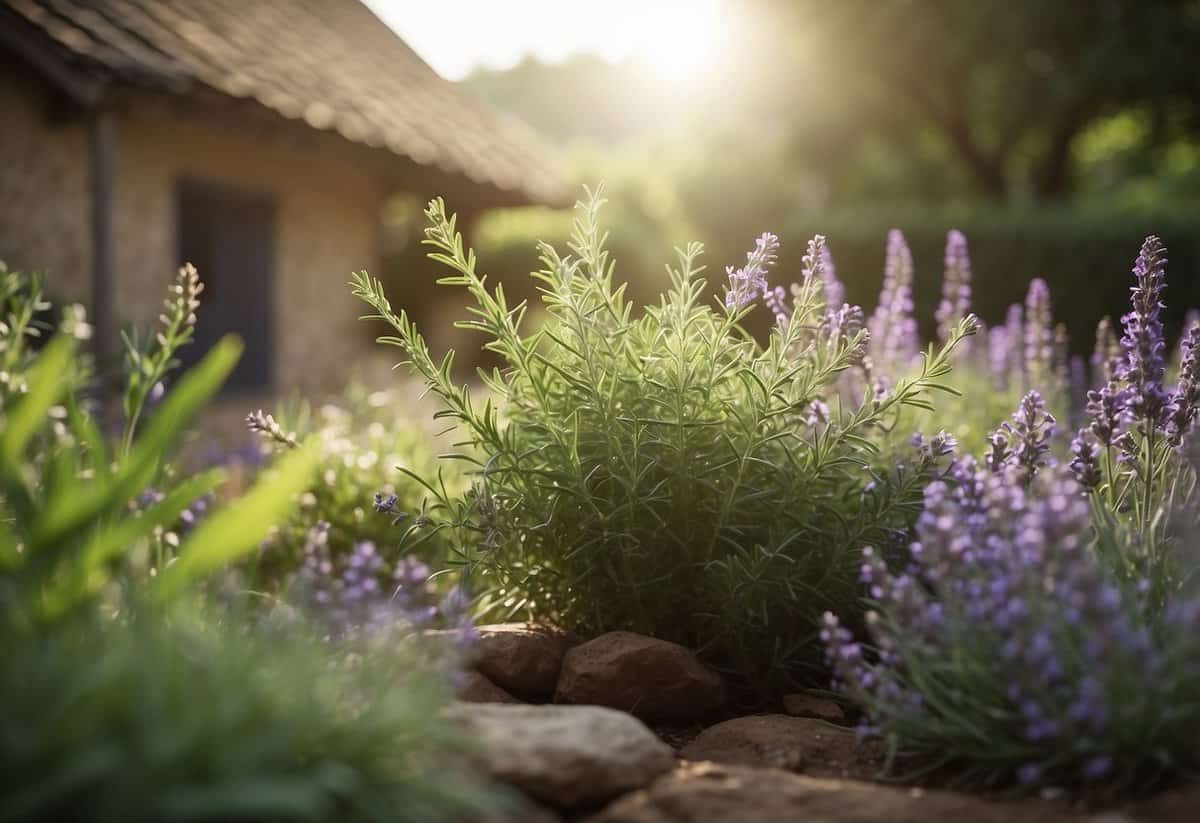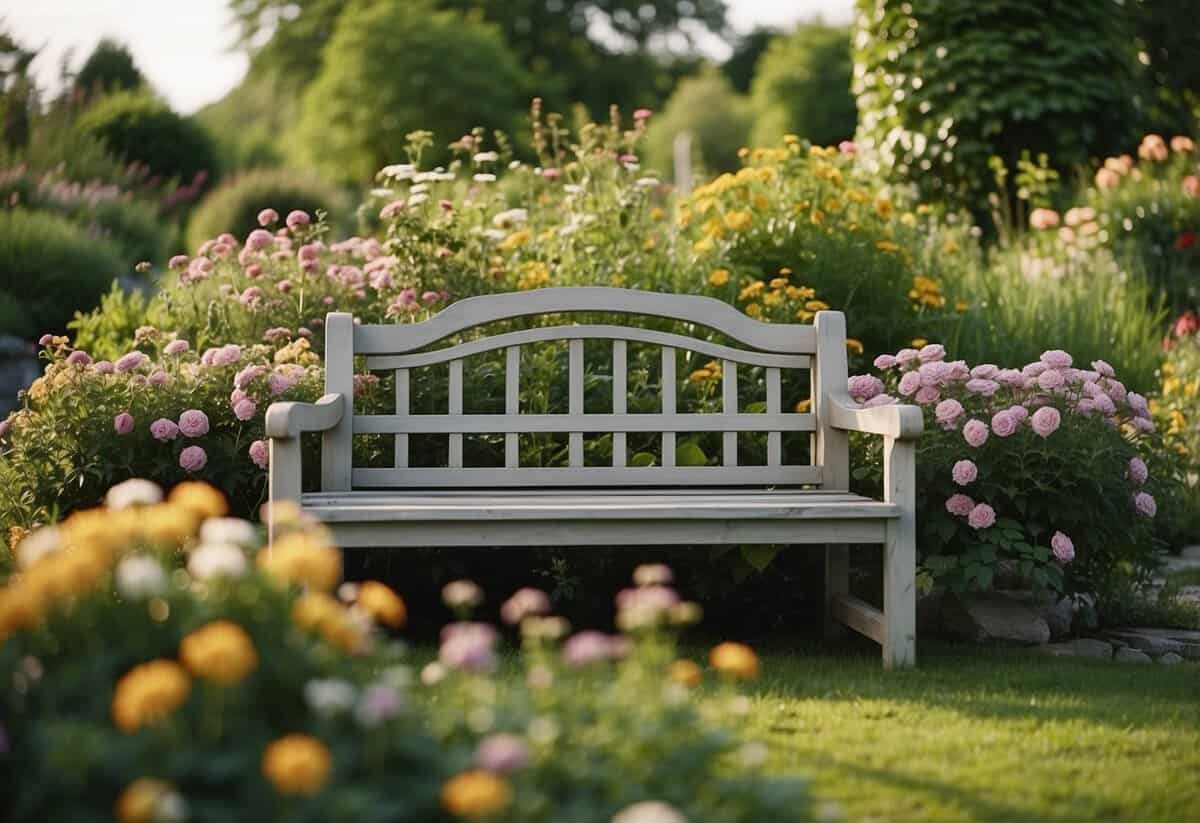Cottage Garden Tips: Creating Your Dream Floral Haven
Cottage gardens are like a peaceful retreat right in your backyard. They combine a mix of flowers, herbs, and vegetables to create a relaxed and charming atmosphere. You don’t need to have a lot of gardening experience to enjoy a cottage garden‘s beauty.

What’s the key to a beautiful cottage garden? It’s all about creating a space where plants thrive with minimal fuss. With a bit of planning and the right approaches, you can make a garden that’s colorful, lush, and easy to maintain.
1) Choose Native Plants

Picking native plants for your cottage garden is a great idea. Native plants are well-suited to your local climate and soil, making them easier to grow.
These plants also support local wildlife, such as bees and butterflies. They are more resistant to pests and diseases.
For helpful tips on choosing the right plants, visit Treehugger.
2) Incorporate Perennial Flowers

Perennial flowers are a great addition to your cottage garden. They come back year after year, saving you time and money.
Consider planting Delphinium for its tall, spiky blooms in shades of blue, purple, and pink. Peonies are another lovely choice that thrives in zones 3-8 and produces rose-like blooms.
Perennials like these ensure your garden remains vibrant and colorful throughout the growing season.
3) Plant Fragrant Herbs

Adding fragrant herbs to your cottage garden brings wonderful scents. You can choose from a variety of fragrant herbs like mint, oregano, and sage.
Mint is a popular choice, offering refreshing scents, but be careful as it can become invasive. Plant different varieties such as peppermint or spearmint in separate areas.
For a touch of Mediterranean flavor, oregano is a great option. It grows well in warm climates and adds a delightful aroma to your garden.
4) Use Natural Stone Pathways

Natural stone pathways add charm to your cottage garden. Stones like flagstone or slate blend well with the greenery.
For larger paths, use natural stone with a riven finish for a softer look. You can even create a mismatched pathway using leftover stones from other projects.
To install, dig down about 4 inches to create a stable base. Spread a layer of gravel or sand to level it out.
Keep grass from growing between the stones by using an edger along the edges. This will help maintain a neat look.
5) Add a Garden Bench

A simple bench can make your cottage garden feel inviting. It provides a cozy spot to sit and enjoy the beauty around you.
Choose a bench that matches the style of your garden. Whether it’s wooden, metal, or stone, it should blend naturally.
Place your bench in a shaded spot for comfort. Use a small garden stool if space is limited for added functionality.
Find more ideas for cottage garden benches.
6) Plant Climbing Roses

Climbing roses add charm and beauty to your cottage garden. Choose a sunny spot with well-draining soil. Mix peat moss, potting soil, and mulch.
Plant your rose with the bud union about 2 inches below the surface. Water regularly or set up a drip irrigation system to keep the soil moist.
Provide support for your climbing roses using a trellis or fence. Prune and train them to encourage upward growth. In winter, protect the crown in colder climates.
Learn more about climbing roses to enhance your garden.
7) Include a Water Feature

Adding a water feature to your cottage garden can boost its charm. Think about a small pond, a bubbling fountain, or a cascading waterfall. These features create a sense of tranquility and help attract birds and other wildlife.
Place the water feature in a sunny spot. This way, it won’t be too hard to clean and will keep plants nearby hydrated. Adding water features can also provide a soothing sound that makes your garden even more peaceful. For inspiration, you can check out these cottage garden water feature ideas.
8) Use Rustic Garden Containers

Using rustic garden containers can add charm and a unique touch to your cottage garden. You can use old buckets, wooden crates, or even chipped teapots. They give your garden a vintage feel.
Look for items you already have. Upcycling old household objects can be fun and creative. These containers bring personality and whimsy to your space.
Check out tips for creating a cottage garden with containers. It’s perfect for small spaces like balconies and patios.
9) Create a Wildflower Meadow

Starting a wildflower meadow in your cottage garden is a great idea. It adds color and attracts pollinators.
Choose a sunny spot and clear the area of any existing vegetation. Prepare the soil by loosening it and removing weeds.
Sow a mix of wildflower seeds that reseed and spread easily, like black-eyed Susan and butterfly weed. Keep the soil moist until the seeds germinate.
10) Install Birdhouses

Adding birdhouses to your cottage garden brings charm and helps local wildlife. Choose a sturdy birdhouse that suits the birds in your area.
Hang the birdhouse at the right height for the species. For instance, Carolina wrens prefer nest boxes 4-6 feet high, while violet-green swallows like theirs 10-15 feet up.
Face the birdhouse away from prevailing winds. Many people in the United States prefer to face their birdhouses east to avoid strong winds and intense afternoon sun. Adding these simple features can significantly enhance your garden’s appeal.
Designing Your Cottage Garden

In creating a cottage garden, you will need to choose the right plants, layout, and garden structures to ensure the space is not just beautiful but also functional and easy to maintain.
Choosing the Right Plants
Selecting plants for your cottage garden can be a fun experience. Go for a mix of flowers, herbs, and vegetables. Perennials like lavender, foxgloves, and roses are great choices because they come back year after year.
You can also add annuals like marigolds and zinnias for a splash of color. For a truly authentic feel, include climbing plants such as clematis or ivy to create height and interest.
Don’t forget to consider the climate of your area. Choose plants that thrive in your local conditions to reduce maintenance and ensure lush growth. Native plants are often a good bet as they are already adapted to your environment.
Creating a Natural Layout
A cottage garden should feel relaxed and informal. Avoid straight lines and formal hedges. Instead, think about winding paths and irregular borders.
Intermingle various plant types—mixing herbs with flowers and vegetables. This not only looks pretty but also creates a more diverse and resilient garden.
Use gravel, mulch, or stepping stones for paths to keep the vibe casual and ensure easy access to different parts of the garden. Consider planting in groups or drifts rather than rows for a more natural look.
Incorporating Garden Structures
Adding structures can elevate your garden’s charm. Consider classic elements like trellises, arbors, or garden benches. Metal or wooden arches are perfect for climbing plants, adding vertical interest to your space.
You can also use stone walls or rustic fences to define areas within the garden. Garden furniture like metal stools or wooden benches provides places to sit and enjoy your handiwork.
Small water features or bird baths can add an element of tranquility, attracting wildlife to your garden. Structures not only enhance beauty but can also serve functional purposes, like providing support for plants or creating shade areas.
Maintaining Your Cottage Garden

Regular maintenance helps keep a cottage garden thriving. Focus on timely pruning, managing pests, and caring for your garden throughout the year.
Pruning and Deadheading
Pruning is crucial for keeping plants healthy. Trim back overgrown branches to promote new growth and remove dead or diseased parts.
Deadheading is another important task. By removing spent blooms, you encourage plants to produce more flowers. This keeps your garden vibrant. Use sharp pruners to make clean cuts and avoid damaging plants.
Don’t forget to prune shrubs and hedges to maintain their shape. For climbing plants on arbors or trellises, keep them trimmed to prevent overgrowing.
Managing Pests and Diseases
Pests and diseases can harm your garden. Inspect plants regularly for signs of trouble, like yellowing leaves or spots.
Use natural remedies to manage pests. For example, introduce beneficial insects like ladybugs to control aphids. Homemade sprays made from soap and water can also help.
Practice good garden hygiene. Remove fallen leaves and dead plants that can harbor diseases. Rotating crops each year reduces pest problems.
Seasonal Garden Care
Different seasons require different care. In spring, focus on planting and fertilizing. Use compost to enrich the soil and help plants start strong.
In summer, water your garden regularly. Mulch helps retain moisture and keep weeds down. Prune as needed to keep plants in check.
Fall is for cleanup. Remove annuals and add a layer of mulch to protect the soil over winter. This is also a good time to plant bulbs for spring blooms.







